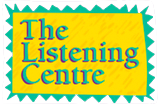Kyle's Story
Letter to the Editor, This Week, Tuesday Edition, September 28, 1999
I also have a child who was diagnosed at two-and a-half years old with the severe speech disorder Developmental Apraxia. With apraxia, the child has all the parts for speech and language but they are just not connected. Like Mrs. Marlow, I searched for services. My son Kyle also receives speech therapy from Grandview when the 6-8 week block of therapy is offered. We use a private speech services clinic when not at Grandview.
For his motor skills we sought Sensory Integration Occupational Therapy through private services called Inter-Action in Whitby. He is still on the four-year waiting list for sensory integration therapy at Lakeridge Hospital.
Through another parent, we learnt about the Listening Centre. Listening training, voice training is done through a program of sound stimulation and counseling based on the work of the Dr. Alfred Tomatis. Through specialized audio equipment individuals listen with headphones to filtered Mozart music. Our son could only pronounce vowel and two consonants when he entered the program at three-years-old. After the first intensive phase he was able to imitate several sounds. The connections were being made for speech. It was not long and the words started - first single syllable then multi-syllable. Speech therapy became a daily part of our lives. Three months after the second intensive phase and a one week reinforcer ‘boost’, Kyle was talking in 2-3 word sentences.
The Listening Centre was the turning point on his road to a remarkable recovery. Our prayers were answered. Our son Kyle is now a confident four-year-old who has reached the expected expressive level in his speech in a very short time. He has become a chatter box!
 Skip Navigation
Skip Navigation